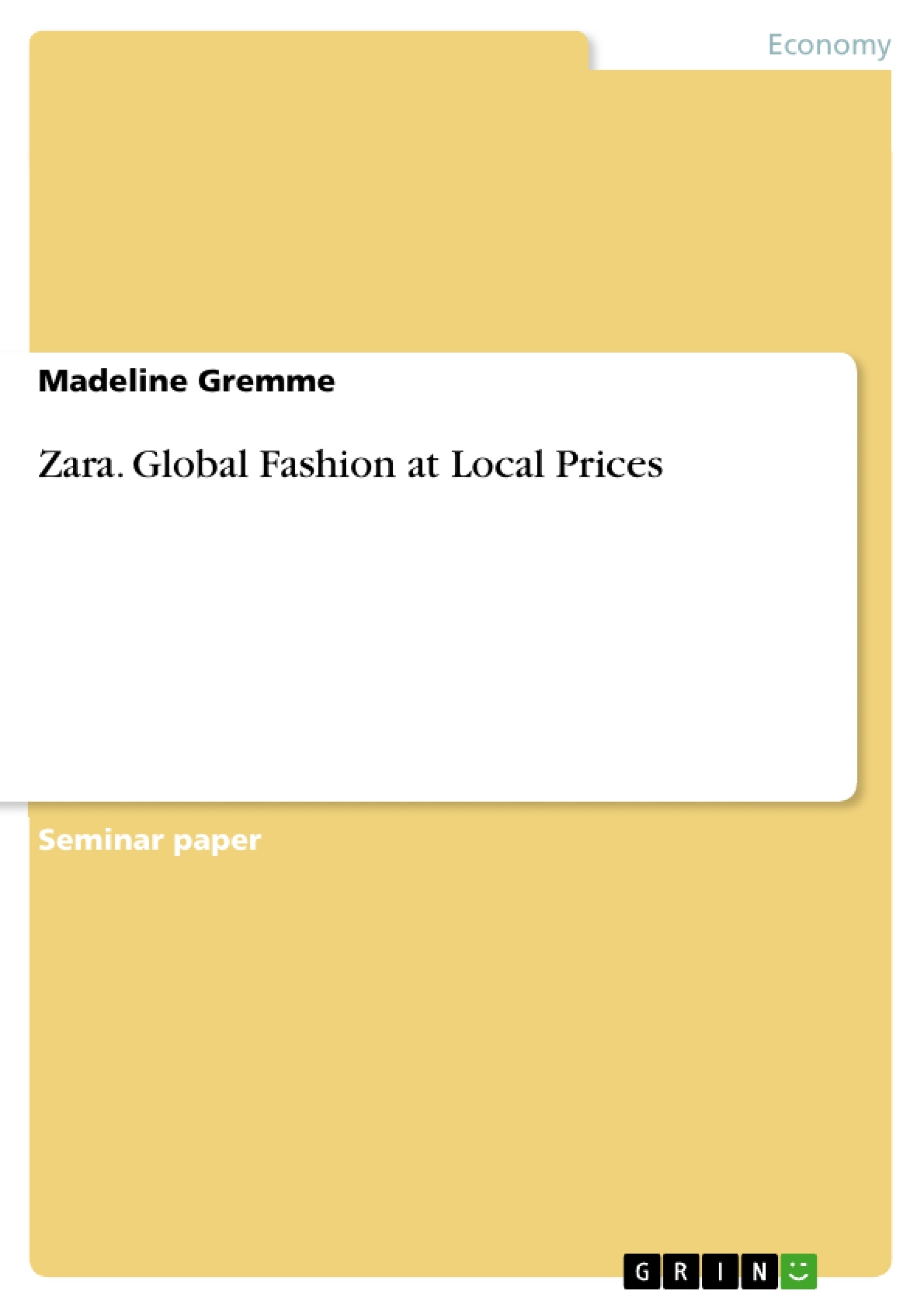The Apparel Industry is segmented and a market, a lot of players are competing with their products. Zara is one of the most renowned and famous fashion icons of our time. It is not only generating the highest profit margins for organization but also is the most famous and recognized by customers in market. With some 650 stores in 50 countries, Spanish clothing retailer Zara has hit on a formula for supply chain success that works by defying conventional wisdom. This case study on Zara should explain which Internationalisation Strategies and Strategic Management Zara is using in order to compete successfully on the global market and how it is able to deliver to their customers’ global fashion at local prices.
Inhaltsverzeichnis (Table of Contents)
- Topic: Zara - Global Fashion at Local Prices
Zielsetzung und Themenschwerpunkte (Objectives and Key Themes)
This term paper aims to analyze Zara's strategic management approach, focusing on its global fashion strategy and its ability to offer competitive prices in local markets. The paper will delve into the company's unique business model, its supply chain management, and its competitive advantages.
- Zara's Global Fashion Strategy
- Local Pricing and Market Adaptation
- Supply Chain Management and Efficiency
- Competitive Advantage Analysis
- Sustainability and Ethical Considerations
Zusammenfassung der Kapitel (Chapter Summaries)
This preview does not include a summary of the content as it is a very short text. The text only contains information about the author and details about the publishing company.
Schlüsselwörter (Keywords)
The primary keywords and focus topics of this paper include Zara, strategic management, global fashion, local pricing, supply chain management, competitive advantage, and sustainability.
- Quote paper
- Madeline Gremme (Author), 2014, Zara. Global Fashion at Local Prices, Munich, GRIN Verlag, https://www.grin.com/document/287557



